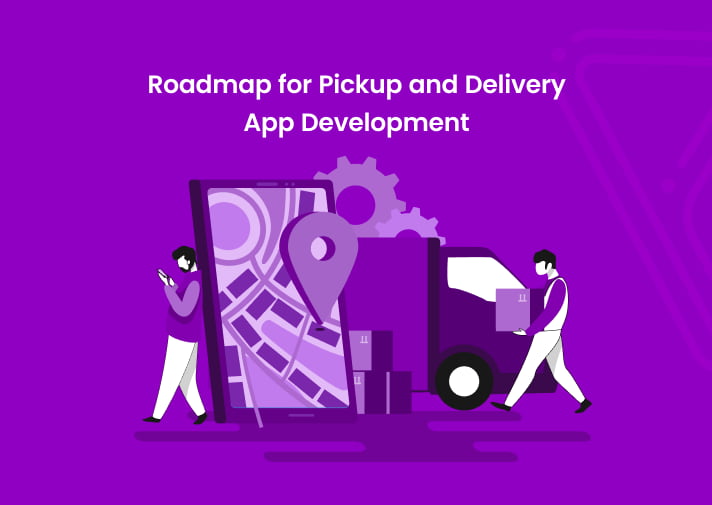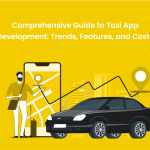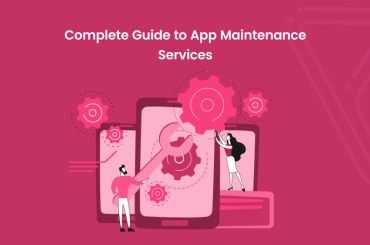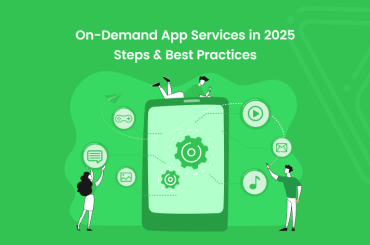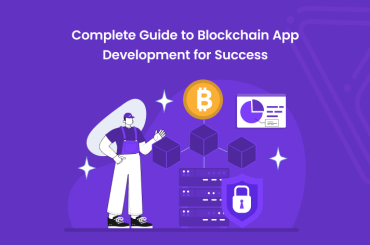Pickup and delivery app make life easier by letting you get what you need without leaving home. Whether you’re ordering food, groceries, or packages, these apps let you request deliveries quickly and easily. They are a big help for busy people who want things brought right to their doorstep.
These apps help businesses by making deliveries faster and easier. More people use them because they save time and effort. A Mobile App Development Company in Chennai can build smooth and user-friendly apps to improve the experience. It’s a great way to get your needs without leaving the house.
In addition to mobile apps, businesses can benefit from ERP Software Solutions that help streamline operations, automate processes, and improve overall efficiency. These solutions ensure seamless order tracking, better resource management, and enhanced customer service, making business operations smoother and more productive.
Why Use a Pickup and Delivery App?
Pickup and delivery apps make life easy. With a few taps, you can get food, groceries, or packages delivered and track your order.
For businesses, these apps save time, cut costs, and improve service by streamlining deliveries and reducing errors.
Types of Pickup and Delivery Apps
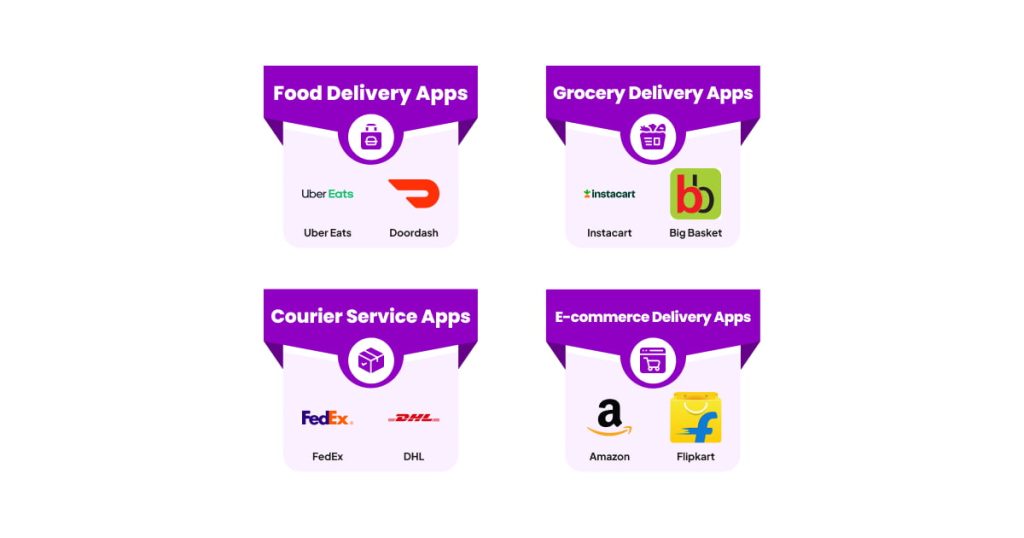
Pickup and delivery apps are very helpful for getting things to your door. Many types of apps serve different needs. Here are the main ones:
Food Delivery Apps
These apps let you order food from your favourite restaurants and have it delivered to your house.
Examples:
Uber Eats, DoorDash – Get your meals quickly.
Grocery Delivery Apps
You can order your groceries from home and have them delivered right to your door. This saves time and effort.
Examples:
Instacart, BigBasket – Get fresh groceries delivered fast.
Courier Service Apps
These apps are for sending packages or documents quickly. They are great for businesses and people who need to ship items safely.
Examples:
DHL, FedEx – Ship items safely and quickly.
E-commerce Delivery Apps
These apps are used by online stores to deliver products to customers after they buy something.
Examples:
Amazon, Flipkart – Fast delivery for online shopping.
Each type of app is made for a different purpose, but all make life easier by getting what you need delivered fast. Whether it’s food, groceries, packages, or products, these apps help save time and bring convenience.
List of Popular Pickup and Delivery Apps
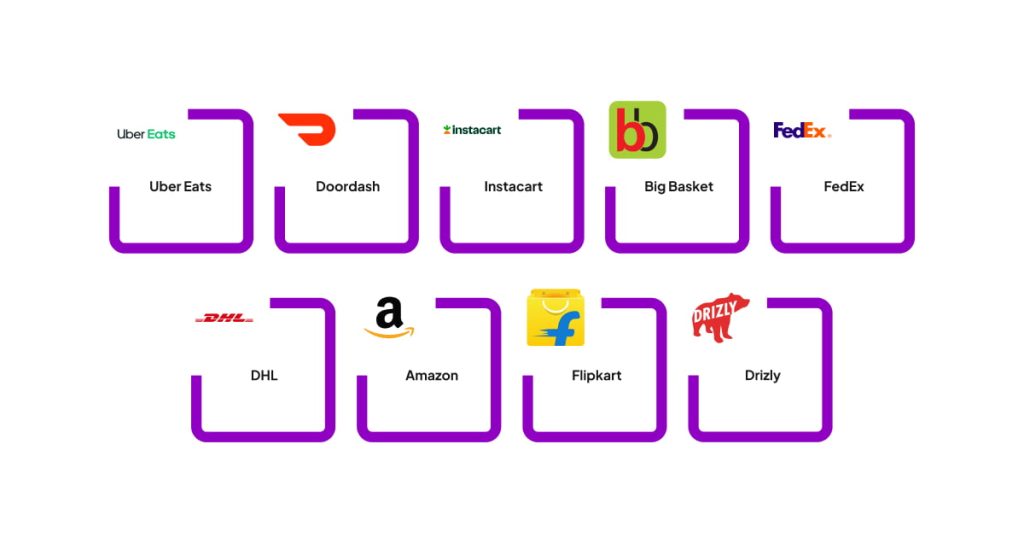
- Uber Eats
Uber Eats lets you order food from local restaurants and have it delivered fast. You can pick from many food choices. However, delivery fees can sometimes be high.
- DoorDash
DoorDash allows you to order food from nearby restaurants. It offers a lot of food options, but delivery can take longer during busy times.
- Instacart
Instacart helps you buy groceries from local stores and have them delivered to your home. It makes shopping easy, but extra fees can make it costly.
- BigBasket
BigBasket is an app for ordering groceries in India. They offer quick delivery and many choices, but delivery times can be limited in some areas.
- FedEx
FedEx is a fast and reliable service for shipping packages worldwide. However, it can be expensive for smaller items.
- DHL
DHL is great for quick international deliveries. But for local deliveries, it can sometimes take longer.
- Amazon
Amazon is an online store where you can find almost anything. Delivery is quick, but it can cost a lot sometimes.
- Flipkart
Flipkart offers a wide range of products, especially electronics. Delivery may be slower in some areas.
- Drizly
Drizly delivers alcohol to your door, but it’s only available in certain places.
These apps make it easier to get things delivered quickly, with each offering different benefits and some downsides depending on where you live.
Step by Step Guide to Building a Pickup and Delivery App
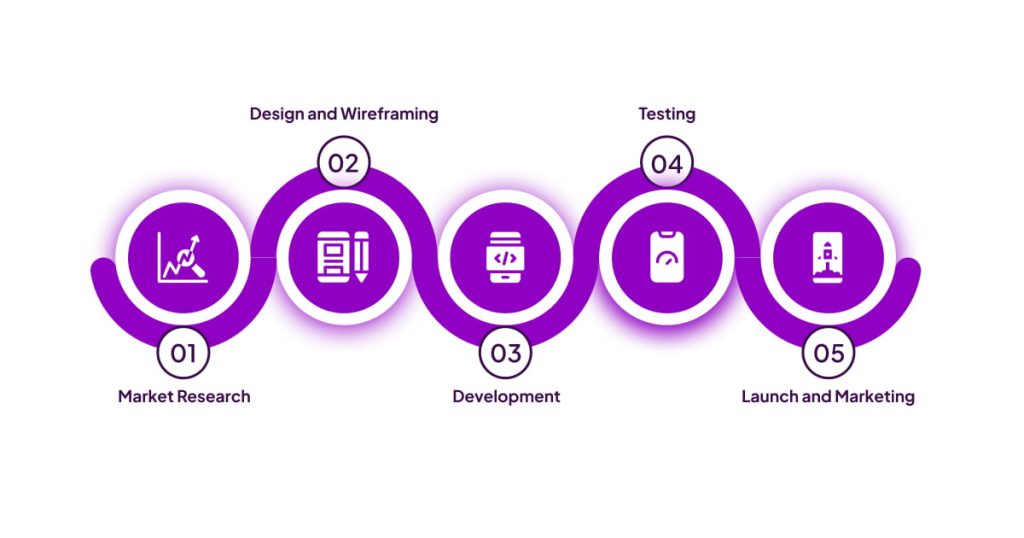
Building a pickup and delivery app is a process that requires careful planning. Here’s how you can follow the App Development Process
- Market Research:
Start by finding out what people need. Look for areas where the current apps are lacking or where there is room for improvement. This will help you understand what users expect and how to meet those needs.
- Design and Wireframing:
Next, create a blueprint for the app. Focus on how easy it will be for users to navigate. A simple and user-friendly design will make the app more attractive to customers.
- Development:
Choose the best technology for your app. It’s important to pick tools that allow the app to grow easily and perform well, especially as more people use it. Think about future updates and new features.
- Testing:
Testing is key to making sure the app works correctly. It’s important to test the app on different devices to find bugs or security issues. This will ensure users have a smooth experience.
- Launch and Marketing:
Once the app is ready, plan a strong marketing campaign. This will help spread the word and get people to use the app. A good marketing strategy will make sure users start using your app quickly.
Modules:
Different modules in the app make it work well:
- User Module:
This is where users sign up and create their profiles. It keeps their information safe and easy to access.
- Delivery Module:
This helps track the delivery and optimize routes. It ensures fast and accurate deliveries.
- Admin Module:
The admin can manage orders and check important data like sales and delivery times. This helps make better decisions.
Challenges in Developing a Pickup and Delivery App
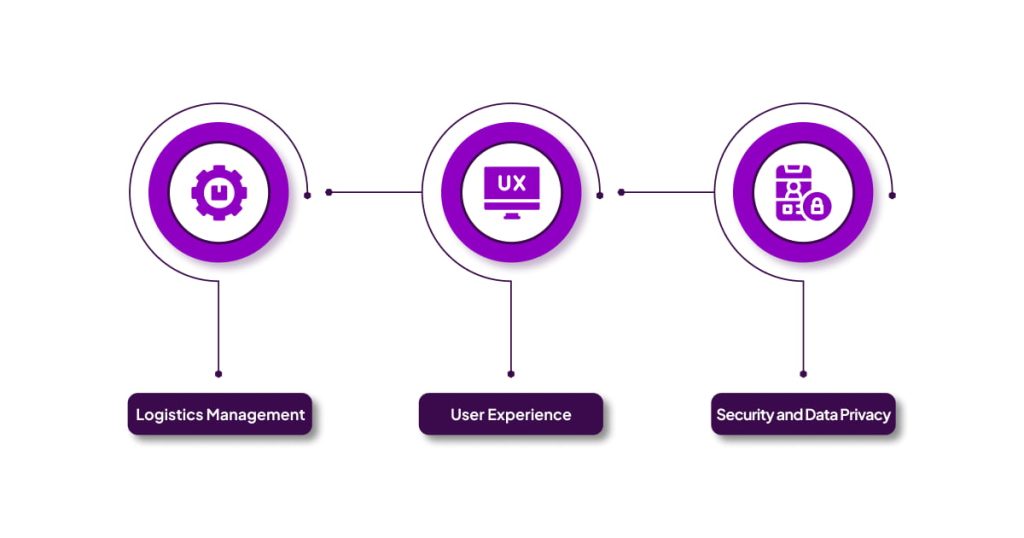
Building a pickup and delivery app has some challenges:
- Logistics Management:
Getting deliveries to customers on time is tricky. It is important to find the fastest routes, but things like traffic can make this hard.
- User Experience:
The app should be easy to use. If it’s too complicated, people won’t want to use it. A simple and friendly design is key.
- Security and Data Privacy:
Keeping user information safe is very important. We need to make sure customers’ personal and payment details are protected.
To solve these problems, you need careful planning and the right technology. By focusing on making the app easy and useful, you can improve it for everyone.
Key Benefits of Pickup and Delivery Apps
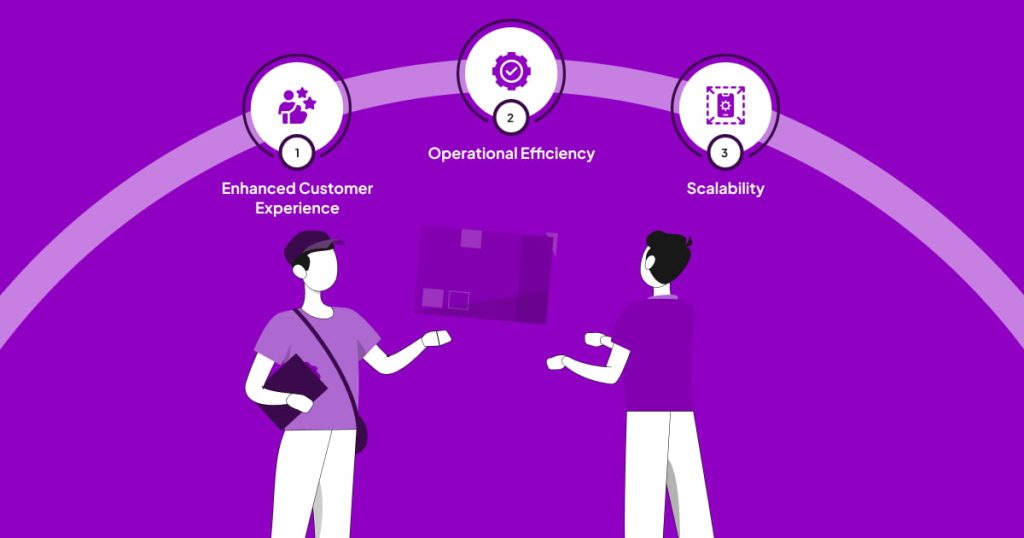
Pickup and delivery apps offer many benefits to firms and users in many ways, making things faster and easier.
- Enhanced Customer Experience:
Customers can track their orders in real-time, so they know exactly when it will arrive. This keeps them happy and builds trust.
- Operational Efficiency:
These apps save time and money by planning the best routes for deliveries. They also help businesses make fewer mistakes and deliver faster.
- Scalability:
As a business grows, these apps can handle more orders without any problems. They make it easy for businesses to meet higher demand and add new services.
Essential Features of a Pickup and Delivery App
To make a pickup and delivery app easy to use, it needs some important features:
- User Profiles and Authentication:
Users should be able to set up their accounts. This saves their information, like where to deliver and how to pay. It makes ordering faster.
- Real-Time Tracking:
Users can see where their order is, from pickup to delivery.
- Payment Integration:
The app should have different payment options, like credit cards and online wallets. This helps users pay how they want.
- Push Notifications:
The app should send updates, like when the order is coming or if there are delays.
- Review and Rating System:
Users can leave reviews and ratings. This helps the app improve and lets others see how good it is.
These features help make the app easy to use and keep customers happy.
App Development Framework and Module Overview
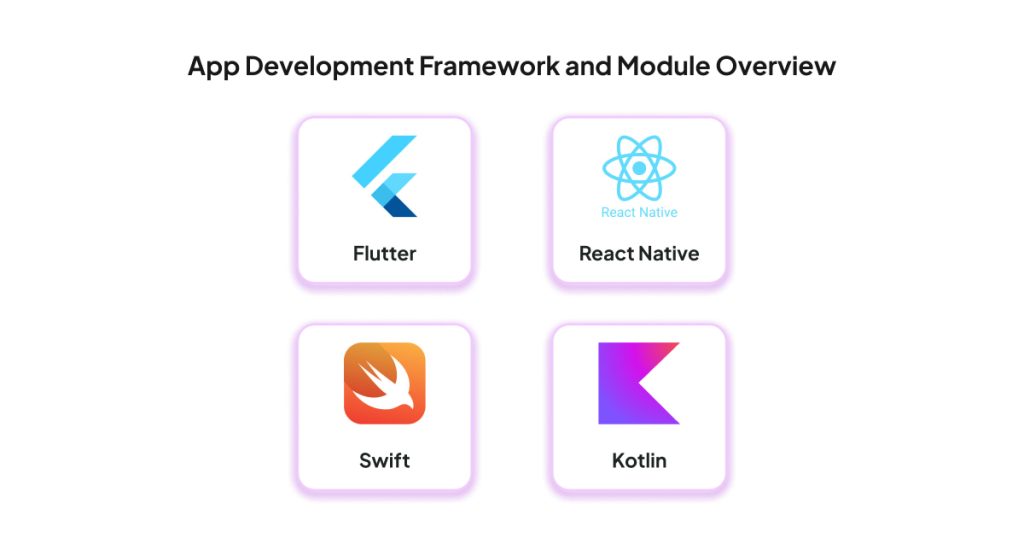
Frameworks:
- Flutter
Flutter is a tool made by Google. It helps build apps for both Android and iOS. Developers use it to create smooth apps with great designs. Flutter App Development allows designers to easily make custom and user-friendly interfaces.
Best for:
Apps that need good performance and custom designs for both Android and iOS.
- React Native
React Native helps developers build apps using JavaScript. It is easy to make apps for both Android and iOS app with the same code.
This framework is great for creating smooth and responsive UI/UX Design, especially in iOS App Development, making it easier to develop cross-platform apps efficiently.
Best for:
Apps that need fast development and good design for both Android and iOS.
- Swift
Swift is the most common language for creating apps on Apple devices like iPhones and iPads. With Swift, developers can create apps with great designs that work well on iOS devices. It follows Apple’s guidelines for easy and clear design.
Best for:
Apps made for iPhones and iPads with great designs.
- Kotlin
Kotlin is a language used for Android App Development. It helps developers build apps that are easy to use and look great. Kotlin works well with Android’s UI/UX designs to create smooth and safe apps.
Best for:
Android apps that need clear, safe, and good designs.
Emerging Trends in Delivery App Development
Emerging trends in delivery apps are changing how things are delivered.
- AI and Machine Learning:
These tools help find the fastest delivery routes. They also predict busy times, which makes deliveries quicker and easier.
- Drone Deliveries:
Drones can bring packages to places that are hard to reach. They help make deliveries faster and cheaper, especially for urgent packages.
- IoT Integration:
Smart devices keep track of packages in real time. This helps customers know where their items are and ensures they arrive on time.
These trends help businesses deliver faster and better. This makes them stand out more in the market.
App Users and Target Audience
- Individual Consumers:
These users need a simple way to get everyday items delivered to their doorsteps.
- Businesses:
They use delivery apps for smoother supply chain management and to reach more customers.
- Delivery Agents:
These users look for flexible jobs with the freedom to work when they choose.
Knowing who your users are helps create the right features and reach them with the right marketing.
Cost Estimation for Developing a Pickup and Delivery App
- Development Costs:
Building an app can cost anywhere from $15,000 to $200,000. The price depends on the features you want, like tracking or AI. Simple App Development Costs are less, but complex ones are more expensive.
- Maintenance and Updates:
After the app is made, you’ll need to spend 15-20% of the cost each year to fix bugs and add updates. This helps keep the app working well.
- Marketing and Promotion:
It’s good to spend 20-30% of your total Budget on marketing to attract new users and keep them using the app.
By planning well for app development, marketing, and updates, you can save money and make your app work better.
Monetization Strategies for Pickup and Delivery Apps
- Subscription Plans:
Offer a special plan where users pay a monthly or yearly fee to access extra features like faster delivery. This helps earn money every month and keeps customers happy.
- Delivery Fees:
Charge customers for each delivery based on how far it goes or a fixed amount. This way, you earn money for every delivery you make.
- Advertising:
Let other businesses show ads on your app. They pay you when people click on or view the ads, helping you earn money while users still get the service they need.
Picking the right way to make money depends on who your customers are and what your business wants. Using a mix of these ways can help make more money while still keeping users happy.

Conclusion: Key Takeaways
Pickup and delivery apps make it easier for people to get what they need quickly. They help businesses provide fast services, which makes them more competitive.
If you want to create your own app, Pyramidions can help. Our team will guide you through every step of the app development process. Contact us today to get started!
FAQs
- Which platform is better for delivery apps: iOS or Android?
Both work well. Android reaches more users, while iOS often has higher spenders.
- What affects the cost of a delivery app?
The features, design, and technology used can increase or lower costs.
- How can businesses get more users?
Offering deals, easy-to-use features, and recommendations help attract and keep users.
- Is AI needed for delivery apps?
AI can help with planning and service but isn’t always required.
- Can these apps connect with other systems?
Yes, they can link with logistics systems to track and manage orders better.

As the Director of Business Development, I have provided top-notch IT solutions for over a decade for software development, mobile application development, and blockchain development. My main work and passion lie in contributing to the business’s success through knowledge, creativity, hard work, and strong organizational skills.

